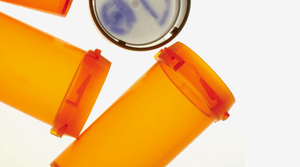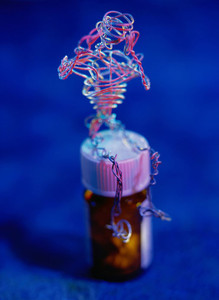After years of warding off generics, large pharmaceutical companies are embracing generic drug manufacturers and vying for a share of the off-patent drugs business. Indian generic companies, once considered business pariahs, are the focus of plenty of action, Anju Ghangurde reports in Scrip News of 9 December 2009.
Mr Ghangurde writes that Tarun Shah, Asia Head of Mehta Partners, the strategic business advisor to Japan's Daiichi Sankyo in its 2008 acquisition of Ranbaxy, argues that it is wrong to think of generics as not "attractively profitable". He explained that Indian generic companies, such as Sun Pharmaceutical Industries (which is also developing ‘New Chemical Entities’ (NCEs)), can enjoy margins as attractive as the likes of Denmark's Lundbeck. "Sun earns its profits from India where the competition is intense, whereas Lundbeck gets 100% of its revenue from patent-protected markets. Still both have equal margins", Mr Shah claimed. He added that Lundbeck incurs certain R&D expenditure, usually for new compounds, which Sun does not. If a profit and loss account is drawn up for marketed products, Sun's operating margins are comparable to Lundbeck's.
Significantly, at the time of the Aurobindo deal, David Simmons, President and General Manager of Pfizer's established-products business unit was reported as saying that Pfizer was not "deteriorating" its margin standards by getting into the generics game.
Mr Ghangurde points out there are varying viewpoints as to whether Big Pharma's entry into generics will lend some stability to, or even improve, generic drug prices. Dr Ajit Dangi, President and CEO of Danssen Consulting and a former Director General of the Organization of Pharmaceutical Producers of India (OPPI), a trade association representing the multinational pharmaceutical industry in India, believes that generic medicine prices will improve slightly due to the trust patients have in innovator companies; this effect could "rub off" on their generics. Other experts, however, argue that generic pricing follows the laws of economics. "This is a different ball game. Prices in generics will be determined by a demand-supply model that governs commodities," said Sanjiv Kaul, Managing Director of ChrysCapital, an India-focused investment firm.
As a rule of thumb, Sun says that generic drug prices are inversely and strongly linked to the intensity of competition of any type, be it from other generics companies or large pharmaceutical companies.
In addition, Mr Shah believes that an indirect effect could be more moderately priced NCEs from innovator companies. "Big Pharma's entry into generics will teach them 'value-for-money' pricing", he claims, adding that Novartis's products are more "fairly priced" than those of other large innovator companies that do not have a presence in generics. (see also Big Pharma finally warms to generic pariahs, Big Pharma’s strategic detour into generics, How easily will Big Pharma slip into generics ‘avatar’? and Should Indian generic firms partner with Big Pharma?)
Reference:
Anju Ghangurde. 2010 Scrip 100: Big pharma finally warms to generic pariahs. Scrip News/2010 Scrip 100. 2009 December 9.








 1
1











Post your comment